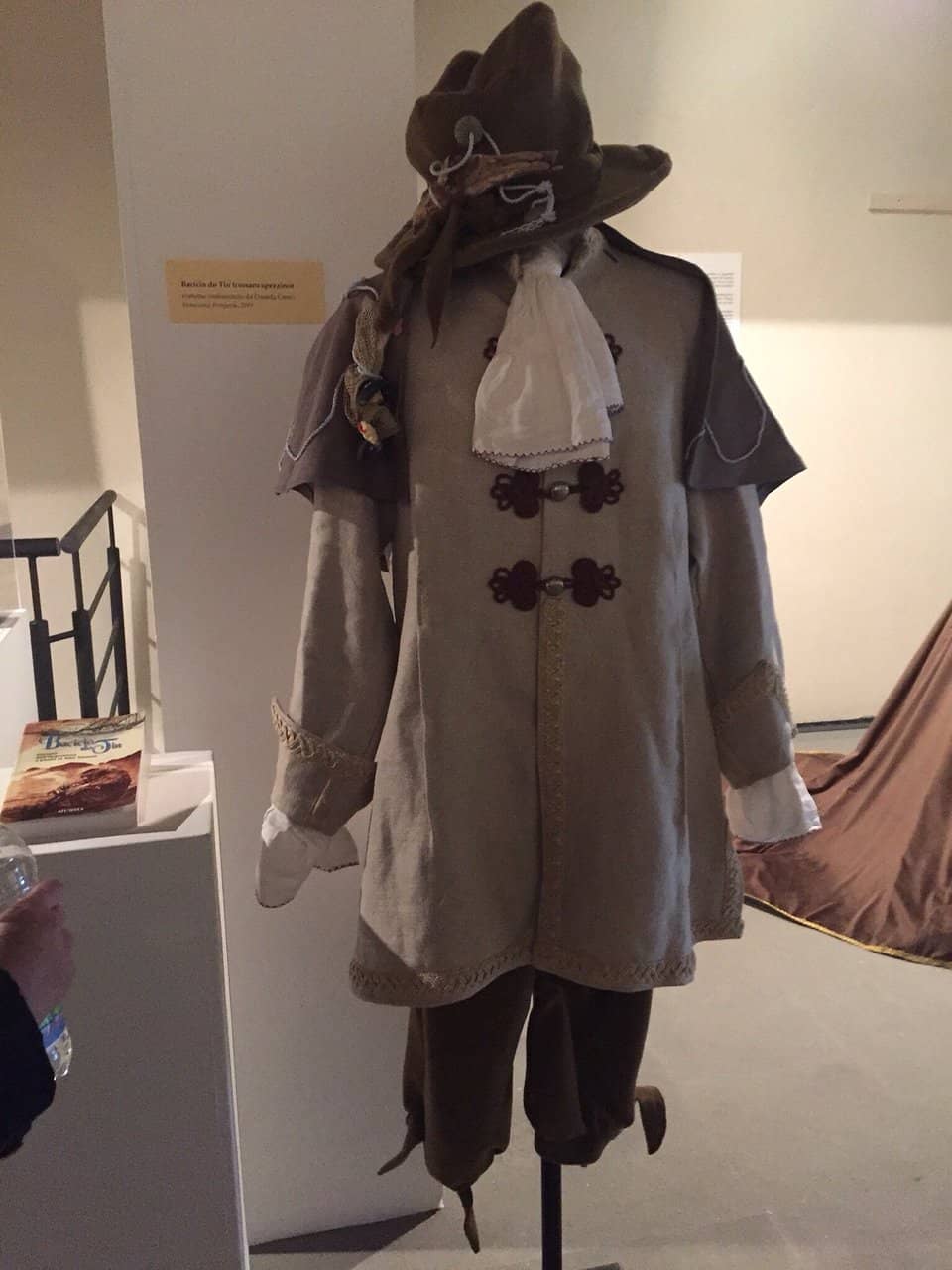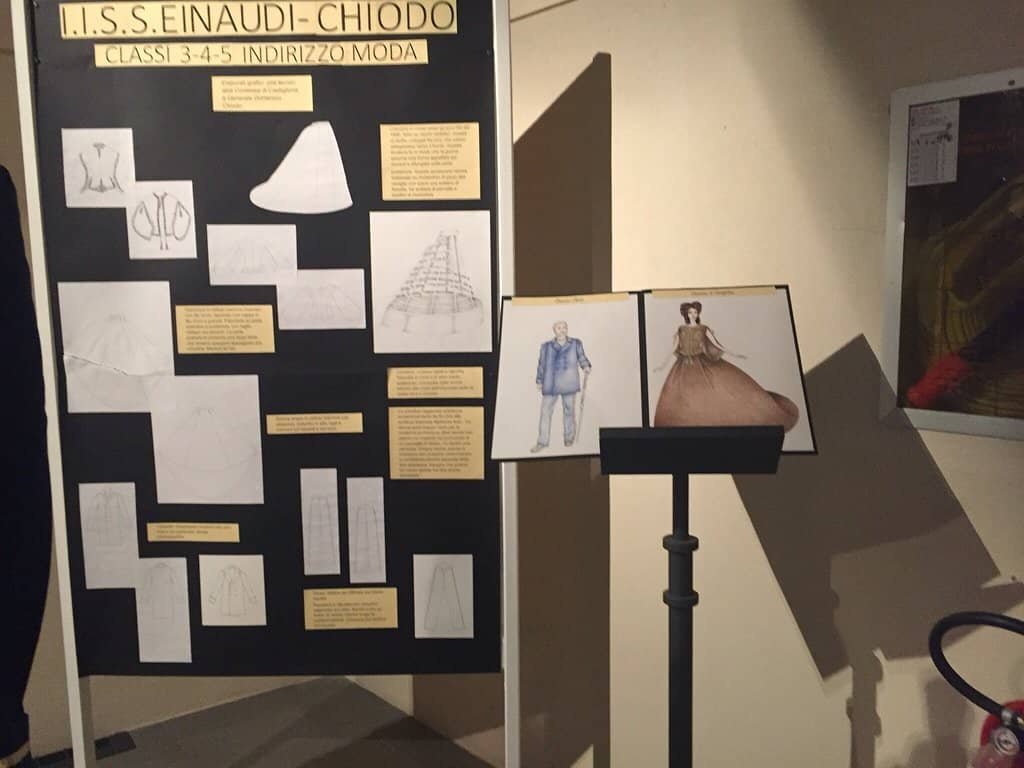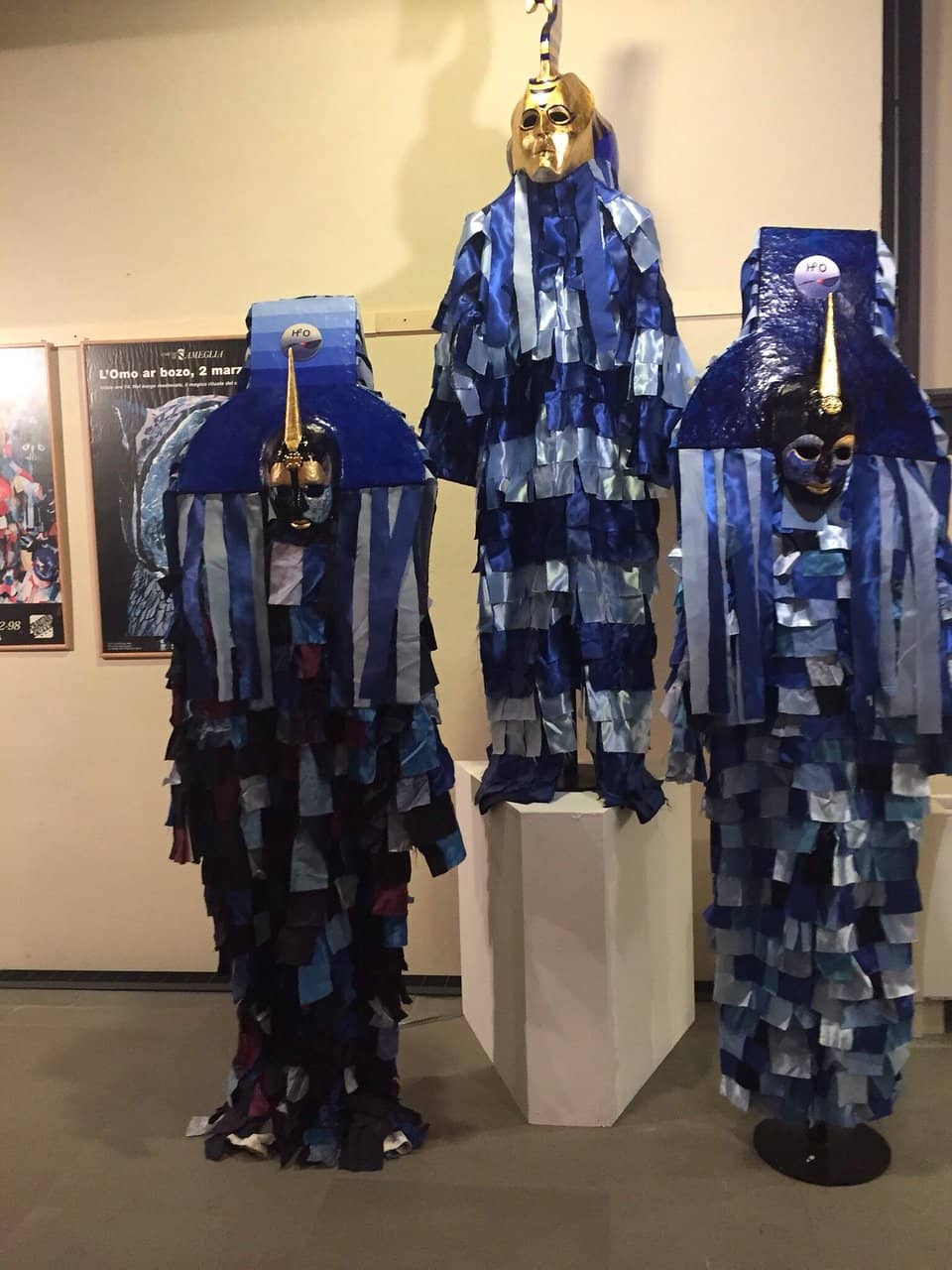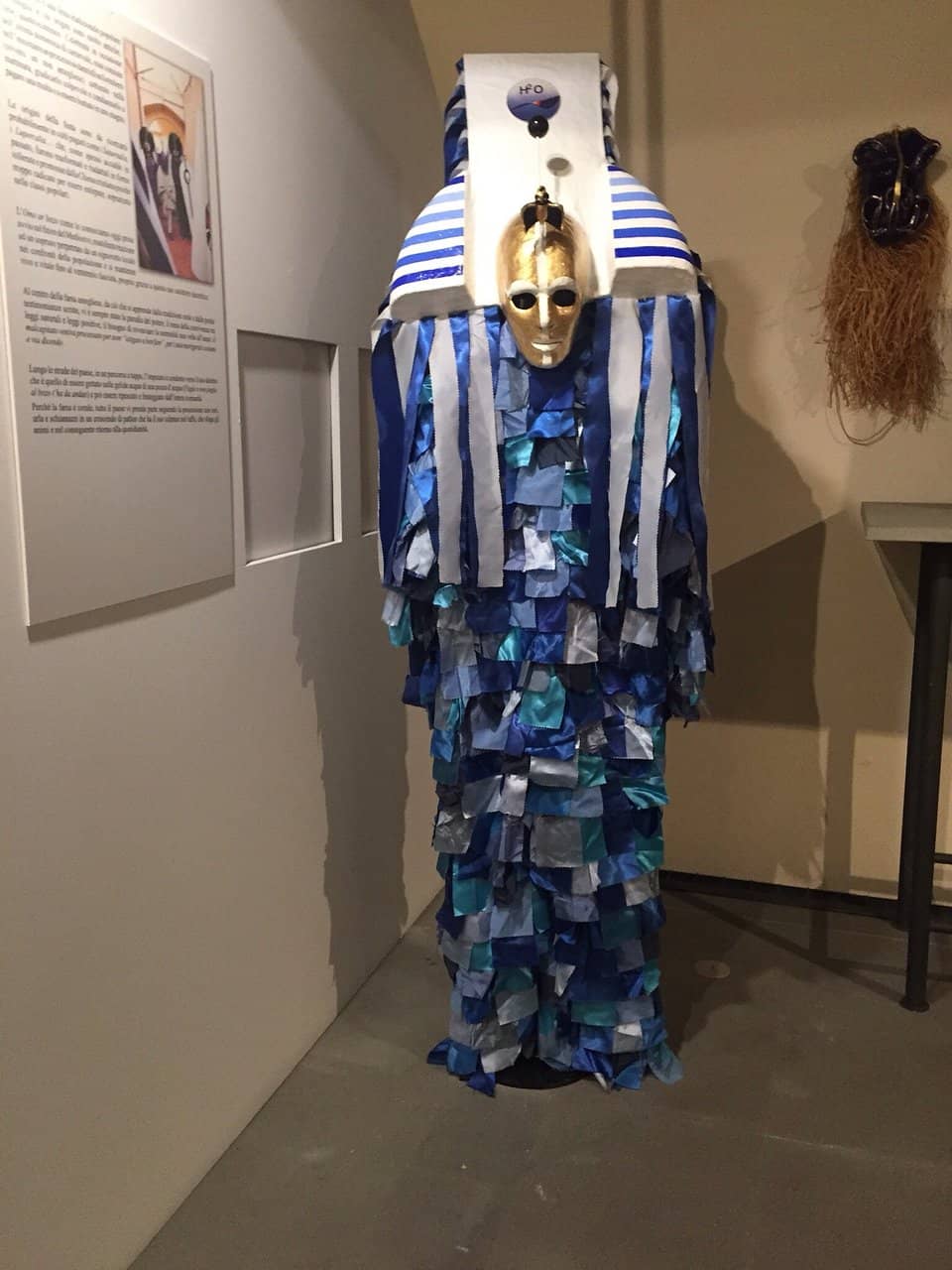
Museo Etnografico Giovanni Podenzana
Discover a vanishing rural world and local traditions at this small but fascinating ethnographic museum in La Spezia.

Highlights
Must-see attractions

Social
From TikTok & Reddit
Best Time
Fewer crowds, more peaceful

Museo Etnografico Giovanni Podenzana
Best Time
Fewer crowds, more peaceful

Highlights
Must-see attractions
Discover a vanishing rural world and local traditions at this small but fascinating ethnographic museum in La Spezia.
"A lovely break from the noisier touristy areas, highly recommended!"

Translate Labels
Bring a translation app! Most signs are in Italian, so this helps understand exhibits. :iphone:
Combined Ticket
Your ticket includes the Diocesan Museum too! Get more value for your visit. :ticket:

Highlights
Discover the most iconic attractions and experiences

Rural Life Artifacts
Discover objects from a vanished rural world, offering a glimpse into the lives of past generations.

Popular Cults & Magic
Explore fascinating displays on local beliefs, superstitions, and ancient healing practices.

Carlo Braccesco Paintings
Admire the art of Carlo Braccesco, with some pieces considered a highlight of the museum's collection.
Plans like a pro.
Thinks like you
Planning Your Visit
Timing Your Visit
Language & Translation
Best Times
Insider Tips
from TikTok, Instagram & Reddit
Translate Labels
Bring a translation app! Most signs are in Italian, so this helps understand exhibits. :iphone:
Combined Ticket
Your ticket includes the Diocesan Museum too! Get more value for your visit. :ticket:
Quiet Escape
A peaceful break from busy areas. Enjoy the calm and unique exhibits. :park:
Focus on Podenzana
Learn about Giovanni Podenzana, the museum's namesake and a key figure in ethnographic studies. :bustinsilhouette:
Tips
from all over the internet
Translate Labels
Bring a translation app! Most signs are in Italian, so this helps understand exhibits. :iphone:
Combined Ticket
Your ticket includes the Diocesan Museum too! Get more value for your visit. :ticket:
Quiet Escape
A peaceful break from busy areas. Enjoy the calm and unique exhibits. :park:
Focus on Podenzana
Learn about Giovanni Podenzana, the museum's namesake and a key figure in ethnographic studies. :bustinsilhouette:
What Travellers Say
Reviews Summary
Visitors find the Museo Etnografico Giovanni Podenzana to be a small but very interesting museum, offering a unique look into a disappearing rural world and local beliefs. It's praised as a peaceful escape from busier tourist spots, with the combined ticket offering great value. Some visitors note that exhibit labels are primarily in Italian, suggesting the use of translation tools for a richer experience.
"Extremely beautiful museum. There was no one else visiting the museum while we were there.
It was a lovely break from the noisier touristy areas.
All/most of the signs are in Italian, it's helpful to have something to translate if you'd like to know more about each piece."
Jessica LeClair
"Nice wee exhibition."
Sarah Currier
"Bello"
Mahr Sajjad
What People Like
What People Dislike
Frequently Asked Questions
🚇 🗺️ Getting There
The museum is located at Via del Prione 156 in La Spezia. It's accessible by public transport within the city. Check local bus routes for the most convenient options.
Street parking might be limited in the area. It's advisable to check for nearby public parking garages or consider using public transportation to reach the museum.
🎫 🎫 Tickets & Entry
The museum typically opens from 10:00 AM to 12:30 PM and again from 4:00 PM to 7:00 PM. It's always a good idea to confirm these hours before your visit, as they can change.
The ticket price is €4.50 per person and includes access to both the Museo Etnografico Giovanni Podenzana and the Diocesan Museum.
Information on online ticket purchasing is not readily available. It's recommended to purchase tickets directly at the museum upon arrival.
Yes, a special exhibition is running until May 4, 2025, focusing on various aspects of local culture and history.
🎫 🏛️ Onsite Experience
The museum showcases artifacts related to rural life, popular cults, superstitions, and magical-therapeutic practices, offering a look into a world that has largely disappeared.
While the exhibits are historically significant, the museum's focus on ethnographic details might be more engaging for older children or those with a specific interest in history and culture.
The museum's curator, Giacomo Paolicchi, often features in videos explaining specific exhibits, offering insights similar to a guided tour.
The Museo Etnografico Giovanni Podenzana is described as small but very interesting, making it a manageable visit.
While not explicitly stated as interactive, the museum's focus on tangible objects from the past aims to provide an immersive experience into historical daily life.
📸 📸 Photography
Photography policies can vary. It's best to check for signage at the entrance or ask museum staff if photos are permitted, especially without flash.
Artifacts related to daily life, traditional tools, and items associated with popular cults often make for visually interesting photographs, capturing the essence of the past.
For Different Travelers
Tailored advice for your travel style
👨👩👧 Families with Kids
Focus on the tangible aspects of rural life and traditional objects, which can spark curiosity. The combined ticket with the Diocesan Museum might offer a broader appeal for varied interests within a family.
📚 History Enthusiasts
The detailed explanations from curator Giacomo Paolicchi, often available through museum videos, provide an in-depth understanding of the artifacts' significance. Don't miss the chance to see the paintings attributed to Carlo Braccesco, which are a notable highlight.
🚶 Solo Travelers
Bring a translation app to fully engage with the Italian descriptions, and take your time to absorb the details of rural life and local traditions. The combined ticket offers excellent value for a solo visit.
Deep Dives
In-depth insights and expert knowledge
Giovanni Podenzana: The Man Behind the Museum
His vision was to capture the essence of human life and traditions. The museum's exhibits reflect this, showcasing a wide array of objects that tell stories of everyday life, beliefs, and practices from a bygone era. The conservator, Giacomo Paolicchi, often highlights Podenzana's legacy in museum videos, emphasizing his role as a pioneer in ethnographic studies.
Visitors interested in the history of ethnography and the dedication required to build such a collection will find Podenzana's story particularly inspiring. His work laid the foundation for understanding the cultural tapestry of the region and beyond.
Exploring Local Traditions and Beliefs
Items related to popular cults and folk remedies are particularly compelling, illustrating how communities historically sought to understand and influence their world. The 'focolare aperto' (open hearth) and carved cradles are examples of traditions that speak to domestic life and cultural identity.
These artifacts are not just objects; they are storytellers, revealing the resilience, ingenuity, and spiritual depth of the people who used them. The museum's small size allows for an intimate exploration of these fascinating cultural elements.
The Role of the Curator: Giacomo Paolicchi
Through his engaging videos, Paolicchi sheds light on everything from historical clothing and tools to specific objects like the 'breve' (a devotional item) and carved cradles. His expertise and passion offer visitors a richer understanding of the ethnographic significance of each piece.
His dedication ensures that the stories behind the artifacts are preserved and shared, making the museum a valuable resource for cultural and historical learning. Following his insights is highly recommended for anyone visiting the museum.





Social
from TikTok, Instagram & Reddit